Table of Contents
Climates of the World:
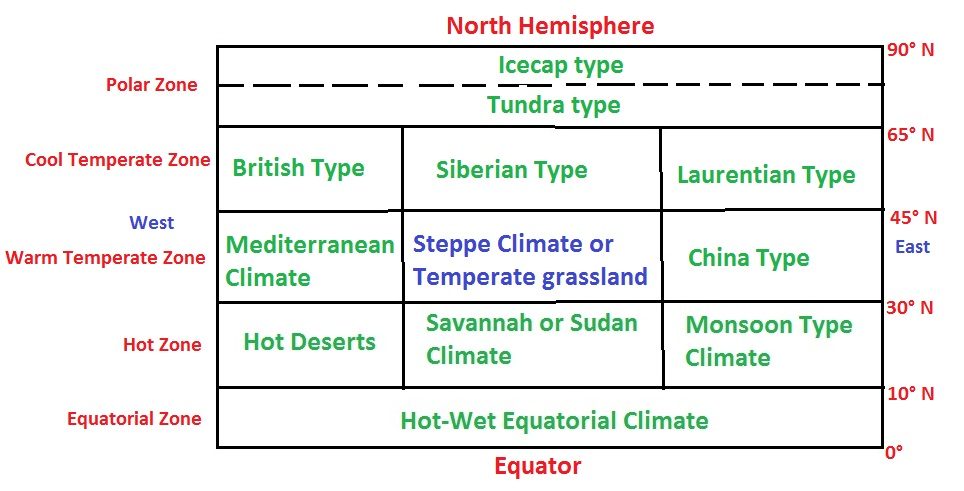
Hot-Wet Equatorial Climate:
- It is characterized by rainfall throughout the year and the temperature never goes beyond 25-27 0C and is a climate with a minimum temperature range.
- Hot and wet throughout the year. Also called Equatorial Rainforest Climate.
- Here the vegetation is hardwood type and that why it is called Lungs of planet Earth.
- It is found in Amazon Rainforest or Amazonian basin, Congo river basin, Indonesia, Malaysia, Andaman & Nicobar Island group, and East Indies.
- Selvas– name of Equatorial Rainforest of Amazon basin.
- This climatic zone is also called a gigantic zoo because of its diversity of faunal species but the majority are of Arboreal character i.e. tree-dwellers.
- These are densest of all the forest and gives gloomy look even during day time and these forest have nearly absence of forest undergrowth.
- All animals are arboreal because all foods available on trees and nothing is provided on land.
- These forests are uneconomical in nature because these forests are very dense and maximum number of species found at a single place.
- Pygmies– found in Congo basin in Africa. They are smallest people on Earth and they live on tree tops.
- Orang-Asli– is the primitive tribe found in Malaysia.
- These forest are under threat because of Shifting Cultivation.
Monsoon Type Climate:
- This climate is characterized by four months of summer rainfall followed by eight dry months.
- So they are also called as Rain green forest.
- It is found on the Eastern coast of the continent between 100 to 300 North and South of the Equator. Example- Indian subcontinent, South-east Asia, Mozambique & Madagascar in Africa, and Australia.
- These are only the hardwood forest found in pure stands. So economically most important.
- Monsoon forest have densest undergrowth of all the forest.
- These forests are under threat because of the huge population size with which there is a problem of shifting cultivation which is named differently in different parts of the world.
| Jhum | India |
| Roca | Brazil |
| Ladang | Malaysia |
| Tamrai | Thailand |
| Chengin / Kaingin | Philippines |
| Chen | Sri Lanka |
| Taungya | Myanmar |
| Humah | Java (Indonesia Island) |
| Milpa | Mexico and Central America |
- This climate is characterized by a rural lifestyle and pediculture. As rice is the most important staple crop. Other crops include cane sugar, jute, manila hemp fiber crop, cotton, etc. Tea and coffee are the two important plantation crops.
The Savannah or Sudan Climate:
- Also called tropical grassland which is characterized by tall and coarse grasses with scattered trees.
- It resembles park like and called as park landscape.
- Grasses are called as Elephant Grasses.
- Transitional climate between Equatorial Rainforest and Desert.
- The extreme diurnal range of temperature is a characteristic of Sudan’s type of climate.
- Savannah is called as–
| Campos | Brazil |
| Llanos | Venezuela |
| Bush Veld | South Africa |
- It is also called as Big game country and thousands of animals are trapped or killed each year by people from all over the world.
- Many tribes live within the Savannah lands. Some tribes live as pastoralists like the Masai and other as settled cultivators like the Hausa of northern Nigeria. However, agriculture is not much developed.
Hot Deserts:
- In Deserts we find xerophytic condition i.e. adapted to water-scarce condition.
- Important Hot Deserts–
| Sahara | World largest desert in North Africa |
| Nubian | Egypt |
| Namib | Southern Africa |
| Atacama | South America, Driest place on Earth |
| Kalahari | Botswana in Africa; Tribes- Bushmen, Hottentots |
| Mojave | North America |
| Sonoran | Mexico |
| Painted Desert | USA |
| Great Victoria Desert | Australia, Great Sandy Desert |
| Gibson | Australia |
| Simpson | Australia |
| Great Indian Desert / Thar Desert | India; forms a natural boundary between India and Pakistan |
| Rub-al-khali, An Nafud | Saudia Arabia |
| Negev | Israel |
| Dasht-e-Kavir | Iran, Sandy Desert |
| Dasht-E-Lut | Iran, Sandy Desert |
| Europe | No desert (only continent where there is no desert) |
- Important Cold Deserts–
| Gobi | Mongolia and China |
| Takla Makan | Central Asia |
| Patagonia | Argentina |
| Ladakh | India |
- Human Life–
| Bedouin | Arabs |
| Bushmen | Kalahari |
| Bindibu | Aborigines of Australia |
| Tuaregs | Sahara |
| Raikas | Camel herders of India |
Mediterranean Climate:
- Also called Warm Temperate Western Margin.
- It is the only climate that is characterized by winter rainfall and summer dry. This happens because of the shifting of pressure belts which make trade winds blow offshore during summertime and westerly to blow onshore during wintertime.
- Old world region and new world region. Area surrounding Mediterranean sea is called old world region.
- New world region include–
| California | North America |
| Central Chile | South America |
| The area around cape town | South Africa |
| Perth and Adelaide | Australia |
- Mediterranean forests are called a dwarf forest. Also called as a shadowless region.
- The Mediterranean lands are also known as the world’s orchard lands because the wide range of citrus fruits is grown such as oranges, lemons, limes, and grapes, etc.
- Also famous for wine production because 85% of the grapes grown the world over. So also called wine yards of the world. Cultivation of grapes is called viticulture.
- Wine is a national drink in Spain, France, Italy, Portugal. Important Wine–
| Sherry | Spain |
| Port wine | Portugal |
| Chianti, Marsala | Italy |
| Champagne | around Paris |
| Burgundy | France |
- Important Fruits–
| Jaffa Orange | Israel |
| Sunkist Oranges | California |
| Tangerine Orange | Morocco |
- Mediterranean region is also famous for olive tree cultivation.
- The farm houses in Spain are locally called haciendas.
Steppe Climate:
- This is found within the continental interior of warm temperate zone. Here the major vegetation comprises of grasses as rainfall is sufficient enough only grasses to grow.
- Also called as temperate grassland and are named differently in different parts of the world-
| Steppe | Europe (Russia and Ukraine) |
| Pustaz | Hungary (Continuation of steppe) |
| Prairies | North America (USA and Canada) |
| Pampas | South America (Argentina and Uruguay) |
| High Veld | South Africa |
| Darling Downs | Australia |
| Canterbury plains | New Zealand |
| Manchurian plains | China |
| Sholas | Nilgiris (Indian temperate grassland) |
| Margs | Jammu and Kashmir |
| Bugyals and Payars | Uttarakhand |
- Here extensive farming is practiced. Farmhouses are called the station in Australia and estancias in Argentina.
- These grasslands are called Granaries of the World or breadbasket of the world as the majority of the production of wheat and corn comes from these places. Besides wheat, maize is increasingly cultivated in the warmer and wetter areas. The tufted grasses have been replaced by the more nutritious Lucerne or alfalfa-grass.
- Important Tribes- Tartars (these are tough fearless people of Kyrgyzstan) and Kazaks (Kazakhstan).
| Savannah | Steppe |
|---|---|
| Long grass. | Small grass. |
| Scattered trees. | Only grasses found. |
| More rainfall. | Less rainfall. |
China Type:
- It has comparatively more rainfall than the Mediterranean climate but mainly coming in the summer season.
- A modified form of monsoonal climate in temperate regions. Also called temperate monsoons or monsoonal climate and is found majorly in China that’s why it is called the china type.
- It is also found in the southeastern states of the USA especially the states of Gulf of Mexico so it is also called a Gulf type of climate.
- In the southern hemisphere this climate is experienced in all the three continents i.e. in New South Wales with its eucalyptus forests; in Natal where cane sugar thrives; and in the maize belt of the Parana-Paraguay-Uruguay basin.
- This climate is characterized with warm moist summer and cool dry winters.
- Here the vegetation is made up of both broad-leaved forest, evergreen broad-leaved forest, and the deciduous trees.
- These are also called as temperate deciduous forest.
- Important trees–
| Quebracho (axe-breaker) | South America, yields the hardest wood in the world. |
| Yerba Mate | Leave of yerba tree are brewed to make tea and is produced majorly in Paraguay. Majorly exported to the USA. |
| Parana Pine | Most important tree in South America |
British Type:
- It is called as cool temperate western margin.
- This region is under the influence of Westerlies all round the year.
- It is found in southern British Island and the countries of northwestern Europe including France, Belgium, Netherland, Denmark, Norway, and northern parts of Spain and Portugal.
- In North America, it is found in the British Colombian state of Canada.
- In southern hemisphere it is experienced in southern Chile, Tasmanian island of New Zealand.
- Here rainfall is well distributed throughout the year and here temperature is found to be moderate as compared to its latitude because of the influence of warm ocean currents.
- Here the vegetation is made up of deciduous forest which yields valuable temperate hardwood. For example- oak, elm, ash, birch, beech, poplar, and hornbeam whereas in highland regions some temperate varieties of eucalyptus trees are found especially in Tasmania.
- This climatic region is one of the most developed regions of the world with high per capita income.
- Important economic activity includes market gardening i.e market-oriented farming. It is called truck farming in the USA.
- It is also the region where mixed farming is practiced.
- The important source of sugar in this region is sugar beet.
Siberian or Cool Temperate Continental Climate:
- It is found only in the northern hemisphere because in southern hemisphere there is no land mass in this latitude.
- It is found in east-west stretches of North America especially in Canada and the east-west stretch of Eurasia starting from Norway to the eastern part of Russia and it is the greatest stretch of this climate and is the single largest band of coniferous trees and is called as Taiga.
- Lumbering– the most important activity i.e. cutting trees on a commercial scale and people who work in this activity are called lumberjacks.
- Many of the Samoyeds and Yakuts of Siberia and some Canadians are engaged in hunting, trapping, and fishing.
Laurentian Type:
- It is found on the eastern coast of the continent in a cool temperature region and is found only in the Northern hemisphere i.e. North-eastern America including eastern Canada and north-eastern states of USA, eastern coastal lands of Asia including eastern Siberia, northern China, Korea, and northern Japan.
- It is nearly absent in southern hemisphere but the only possible location is southern south America.
- This climate is characterized with cold dry winters and warm wet summers.
- Economic Activity: Lumbering, agriculture includes the sowing of potatoes, oats and barley. Here farmers are engaged in dairy farming, hay cultivation and fruit growing.
- The most important fruit grown is the apple. For example- a very fertile Annapolis valley in Nova Scotia in Canada.
- Fishing is, however, the most outstanding economic activity of the Laurentian climatic regions.
Polar Climate:
- The polar type of climate and vegetation are found mainly north of the Arctic Circle in the northern hemisphere. The two subtypes are- Tundra type in the lowlands of high latitudes and the Icecap type in the highlands.
- Tundra means a barren land or a cold desert with severe winter conditions and a snow cover for most of the year. The areas that experience this climate are north Canada, Alaska, the coastal strip of Greenland, the northern coast of Scandinavia, northern Siberia.
- The Polar icecap climate occurs over the interior parts of Greenland and Antarctica.
- Eurasian Tundras have important tribes-
- Lapps– Scandinavia, northern Finland.
- Samoyeds– Siberia i.e. region between Ural mountains and Yenisey river.
- Yakuts– People living around the Lena river basin.
- Koryaks and Chukchi– Northeastern Asia.
- Eskimos– people living in Northeastern Alaska, Canada, and Greenland. Eskimos are Semi-nomadic people and live in compact igloos during winter whereas they live in portable tents made up of animal skin during the summertime. They hunt Caribou and their food includes fish, seals, etc. The boat used by them are known as Kayaks made up of wooden framework with the sealskin.
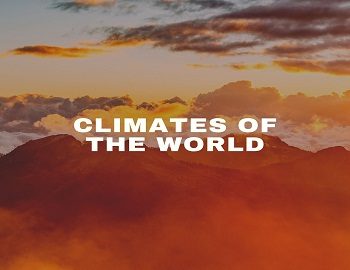
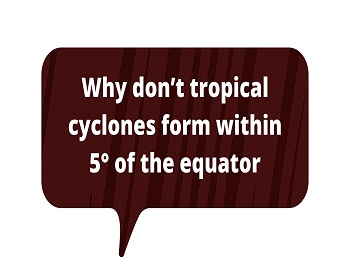



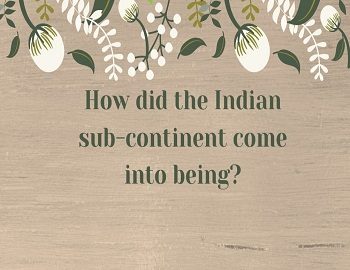


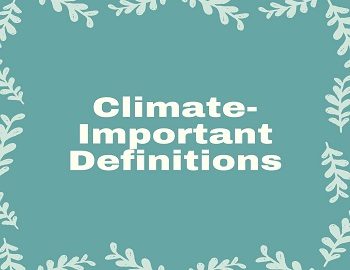
Comments (No)